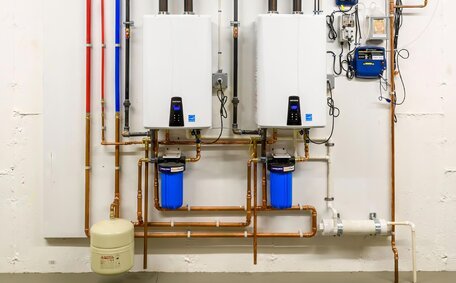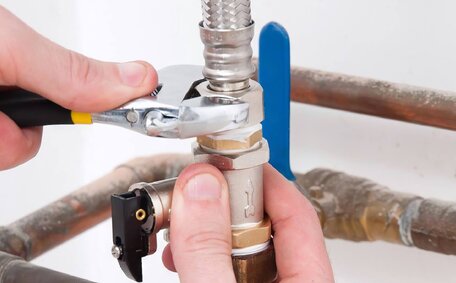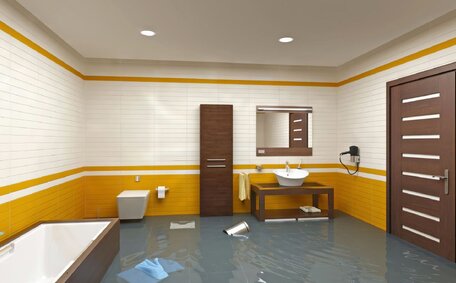Introduction to essential safety gear for gas work
Working with ppe oil gas lines and appliances carries inherent risks that make proper protective equipment an absolute necessity.
As specialists in oil and gas fittings, along with general plumbing across Bella Vista, Sydney, we’re well-versed in the potential hazards technicians face, and we commit to using effective protective gear to mitigate these risks.
Gas work often brings workers into contact with flammable liquids, oxygen depletion, hazardous chemicals, falling objects, among other dangers.
Personal protective equipment (PPE) is critical in safeguarding against diverse hazards, thus ensuring the safety of workers in the oil and gas industry. This article outlines the necessary PPE and its role in maintaining workplace health and safety.
Required certifications and training
Gas workers must possess proper certifications, fulfilling safety and health administration guidelines for their roles. At Bella Vista Plumbing, we abide by Australian standards, maintaining PPE up to industry best practice, thus safeguarding our technicians during all tasks.
The oil gas industry has a notably high fatality rate, underscoring the need for stringent safety protocols enforced through mandatory certifications and training. There are various specialised ppe training sessions gas technicians may undergo, including:
- Working heights and fall protection training
- Confined space entry training
- Safe handling of hazardous chemicals certification
- First aid certification
- Emergency response training, including fire safety and evacuation procedures
Comprehensive training in different types of gas ppe equipment equips our staff with all necessary oil gas knowledge to anticipate, assess, and address the risks associated with their daily tasks. All safety equipment being used, as ppe should, according to the instructions, is imperative to realise its full protective capacity. Maintenance must also be considered pivotal — make sure if safety products like equipment ppe become worn, damaged or compromised, they can render necessary body protection ineffective.
Head protection
Protecting the head is imperative when performing gas work where falling or flying objects pose impact hazards. Australian standards dictate that an approved safety helmet or hard hat must be worn to safeguard gas technicians against injury. Hard hats designed as industrial safety products comprise the following features:
- Tough outer shell (typically high density polyethylene)
- Impact-absorbing lining
- Ratchet or pin lock adjustment system for a secure, customisable fit
- Integration with accessories like face shields, ear muffs, welding masks etc.
- High visibility colours and reflectors
- Electrical insulation protecting up to 1000V (Class E)
- Flame resistance
- Ventilation holes
The standards also cover proper sizing, support, stability and durability criteria vital for reliable head protection. Size adjustments must be made per the manufacturer’s instructions to ensure a snug fit. furthermore, the head face eye protection is crucial, it’s crucial for technicians to wear safety shoes with slip-resistant soles and protective toe-caps on the job.
The suspension harness inside should also offer essential protection against impacts, should be checked before each use for signs of cracking or deterioration which might compromise its shock-absorbing capacities.
A comprehensive risk assessment advises that work must follow safe working practices, such as the routine inspection of their hard hats for dents, cracks, or other damage that would necessitate the unit’s immediate replacement. Your employees must be provided with approved headgear worn when meeting Australian specifications for the conditions they face including electrical currents, heat, falling objects and more.
Storing hard hats properly, cleaning regularly and replacing routinely (general guidance is after 2-5 years) preserves their protective qualities.
Eye protection
Eyes, ears, and skin are vulnerable in gas work, necessitating the use of visual, hearing protection, and protective gloves can shield against chemical splashes, projectiles, and other materials. WorkSafe statistics show the most common cause of eye injuries, accounting for 92%, results from employees not wearing any eye PPE. Furthermore, approximately 2000 US workers sustain job-related eye injuries daily that require medical treatment.
To safeguard technicians, employers must furnish and ensure compliance with AS/NZS 1337 eye and face protection measures. Available options include:
- Safety glasses - Protect against flying particles, fragments, objects, and spill splashes.
- Goggles - Completely seal eyes from fine silica dust and splashing liquids.
- Face shields - Mitigate risks like sparks, glare and chemical vapours. Often worn with primary eye protection.
- Welding helmets/shields - Specialised PPE for welding, laser/UV tasks that protect the face and eyes by filtering specific wavelengths while allowing visibility.
Select eye and face protection that suits the specific hazards and conditions of the work environment, offering sufficient coverage, durability, and fit. Training on proper maintenance, such as washing hands before handling lenses and replacing damaged units, is vital.
Following eye safety best practises preserves vision and prevents lost time incidents in gas industries.
Respiratory protection
Respiratory protection is vital when working around hazardous gases like carbon monoxide, hydrogen sulphide and protecting against chemical exposure from volatile organic compounds which can displace oxygen or be absorbed by the lungs. According to the health administration osha, 90% of oil gas industries worker fatalities between 2003-2013 resulted from inhalation of toxic gases.
Selecting suitable respiratory PPE involves a hazard assessment examining:
- Oxygen levels
- Known/expected contaminants and concentrations
- Warning properties of said contaminants
- Work requirements and conditions
Options include:
- Dust masks designed to filter out airborne particulates
- Half or full face air purifying respirators with interchangeable chemical/particulate cartridges
- Powered air purifying respirators (PAPRs) with helmet/hood delivery
- Self-contained breathing apparatus (SCBA) with independent air supply for high risk situations
Effective respirator use depends on fit testing, cleaning, inspection, and storage. Alternatives, such as PAPRs, may be necessary for individuals with conditions like claustrophobia. Appropriate respirators and protocols ensure technicians can breathe safely, despite variable air quality on work sites.
Protective clothing
Protective clothing creates a strong barrier between against thermal hazards and flammable substances during gas work. Oil and gas extraction sees over 100 serious burn injuries annually, with nearly 20% involving hospitalisation, per U.S. Bureau of Labour Statistics data.
The primary fr clothing worn are flame-resistant (FR) coveralls featuring:
- Fabrics treated to self-extinguish
- Arc thermal protection value (ATPV) rating >8 cal/cm2
- Limited combustibility, heat resistance and thermal insulation
- High-visibility colours for detectability
FR coveralls are made of materials like treated cotton, Nomex, Proban, and carbon/static-control fibres. These materials provide a defence against hazards such as arc flash incidents, flash fires, explosions, and molten metal splashes via extensive coverage of limbs and torso.
Choosing the right garments is pivotal, with workers informed about exposure risks and temperatures to confirm adequate protection. Full FR ensembles should be worn with all fastenings secured and sleeves down, along with complementary garments like FR jackets and gloves. At Bella Vista Plumbing, technicians have access to a full range of FR gear for enhanced safety.
Proper use and maintenance
To fully benefit from PPE, workers should use, maintain, and inspect it correctly, following manufacturers’ guidelines and regulatory standards. Employers, such as Bella Vista Plumbing, facilitate PPE training programs to teach proper procedures.
Essential practices for PPE use include:
- Inspecting prior to each use for defects or damage
- Donning/doffing as trained using all straps and closures
- Avoiding improper adjustments which can reduce protection
- Ensuring compatibility between items used simultaneously
- Replacing obsolete or compromised PPE immediately
Equipment exposed to contaminants or reaching wear limits necessitate maintenance like decontamination, repairs and parts replacement to retain protective capacities.
Thorough training demonstrates procedures for cleaning, storage and inspection per equipment type. For instance, soiled disposable respirators must be discarded while reusables require proper disinfecting. For instance, soiled disposable respirators must be discarded while reusables require proper disinfecting.
Storage areas should be clean, dry and avoid temperature extremes. Storage areas should be clean, dry and avoid temperature extremes.
Re-training should occur annually at minimum, with informal coaching whenever PPE is upgraded or new hazards introduced. Through ongoing education, oil gas workers acquire the essential expertise in safety gear stewardship, allowing them to protect themselves while optimising the value of their safety investment.
Selecting appropriate PPE
Selecting PPE for the gas industry demands a methodical evaluation of work activities, associated risks, and regulatory requirements. Australian standards (AS/NZS) dictate minimum requirements for PPE based on the task specifics and hazards identified through formal risk assessments.
Core considerations when selecting suitable PPE for job duties include:
- Head hazards - Hard hats meeting AS/NZS 1801 are mandated for overhead risks. Features like dielectric rating, airflow vents, accessibility enhancements and integration with other PPE expand protective capacities.
- Eye hazards - AS/NZS 1337 outlines safety glasses/goggles for particle impacts, splash hazards and radian energy. Options include stainless steel frames for durability and coatings blocking infrared/ultraviolet light during welding.
- Hearing hazards - Use AS/NZS 1270 certified earmuffs or earplugs providing enough noise reduction based on decibel levels measured.
- Air contaminants - AS/NZS 1716 dictates respiratory gear ratings (e.g. P2, P3) pertinent to the airborne hazards and exposure levels per risk assessments.
- Skin contact hazards - Chemical resistant gloves that can shield effectively feature materials meeting AS/NZS 2161.2, designed to protect against cytotoxins, oils, acids, etc. Coveralls meeting AS/NZS 4501 enable insulation and some liquid resistance.
- Foot impact/penetration risks – AS/NZS 2210 covers industrial safety boots with steel caps, puncture protection and slip resistance.
Equipment should undergo all fit, compatibility, storage, maintenance and training protocols to supplement regulatory compliance. With structured selection and governance processes, PPE programmes focus on ensuring all gas industry workers are reliably safeguarded against injury.
Meeting safety regulations
Compliance with workplace health and safety regulations is essential in the gas industry to protect personnel from harm and organisations from incidents or penalties. At Bella Vista Plumbing, we make worker safety our top priority by remaining vigilant of Australian standards and codes of practise applying to gas work.
Relevant control measures, including the specific ppe required, incorporate:
- Model Work Health and Safety Regulations - Outline general risk management, certification, protective equipment, hazard control etc.
- AS/NZS 1596: The Storage and Handling of LP gases - Covers gas cylinder storage and handling protocols.
- AS 5601/AG 601: Gas installations - Provides comprehensive specifications for designing, installing, commissioning, altering and maintaining gas systems.
By engaging with industry bodies like Standards Australia, consulting regulators, and conducting training and audits, we remain informed on the latest standard amendments. Our workers need to know and are formally educated on evolving guidelines and their legal obligations regarding safe work procedures, PPE use, training, inspections, maintenance etc.
Systematic self-assessments of our policies and practices against current regulations swiftly uncover and remedy any non-compliance. This risk-based approach exemplifies Bella Vista Plumbing’s steadfast dedication to occupational safety health, enhancing best practice safety frameworks for gas operations that benefit workers, clients, and the wider community.
Ensuring long-term safety
Safeguarding gas technicians in your workplace over the long term necessitates ongoing vigilance and proactive enhancement of safety protocols. At Bella Vista Plumbing, we continually re-evaluate workplace risks and evolve our PPE programmes accordingly through robust governance frameworks.
This sustained commitment to best practise safety allows our staff to operate securely for years while delivering exceptional services to the Bella Vista community.
Regular analysis of procedures, training, and compliance optimises safety beyond basic PPE. Consultations with researchers and regulators identify advancements for improved staff protection, guiding updates to PPE specifications and risk control strategies.
to address emerging hazards.
Annual training refreshed based on the latest science and policy equips workers with updated safety knowledge. Complemented by modernised equipment and infrastructure, this fosters an agile, resilient culture of safety at Bella Vista Plumbing. We also perform frequent self-audits on internal control effectiveness, driving continual enhancements.
If you have questions about our safety credentials or gas services, don’t hesitate to contact Bella Vista Plumbing at 1300 349 338 to speak with our certified and equipped gas technicians.






